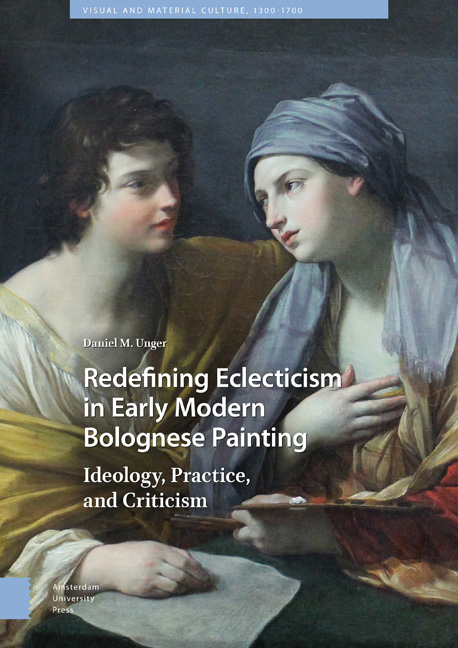Summary
Abstract
Chapter Two will explore the ideological context of non-assimilated eclecticism, which is made evident in Paleotti's book on religious painting. Both the writer and the painters discussed in this book belonged to the same cultural sphere, which was characterized by the resonance of very specific ideas. Paleotti's attitude towards iconography was given expression by means of stylistic tools. His separation between modes of representation was transformed into a differentiation in terms of design, colour, scale, composition, and movement. This chapter continues with an exploration of Guido Reni's visual elaboration on the dichotomy between disegno and colore as a pictorial manifestation of non-assimilated eclecticism. Guido's painting will then be compared with Guercino's more traditional conception of this same subject. Finally, an examination of Malvasia's biography of Ludovico Carracci will suggest some additional concerns addressed through the use of several styles in a single work of art.
Keywords: Gabriele Paleotti, disegno, colore, Guido Reni, Guercino, Carlo Cesare Malvasia
The ideological justification for non-assimilated eclecticism is found in Gabriele Paleotti’s Discourse on Sacred and Profane Images Discorso intorno alle imagini sacre et profane). In his unique commentary on what constitutes a religious painting, Paleotti laid the fundamental principles for an eclectic approach that combines different styles in a single work of art. The Bolognese prelate began by distinguishing between truth and nature, a distinction essential to the separation between terrestrial and celestial scenes included within the same pictorial frame. Paleotti also formulated a new approach to the representation of saints, arguing that the portrayal of those whose visage was known should emphasize their unique features, while those whose features remained unknown should be depicted in a truthful manner. Once again, one can note a distinction between different modes of representations, culminating in the representation of two types of saints, which are combined in a single painting. Paleotti's theological emphasis corresponds to the artistic discourses of the time and especially that of Lomazzo.
In his 1590 Idea del tempio della pittura, Giovanni Paolo Lomazzo elaborated on Paolo Pino's comment on what constitute the two most perfect paintings.
- Type
- Chapter
- Information
- Redefining Eclecticism in Early Modern Bolognese PaintingIdeology, Practice, and Criticism, pp. 57 - 104Publisher: Amsterdam University PressPrint publication year: 2019



